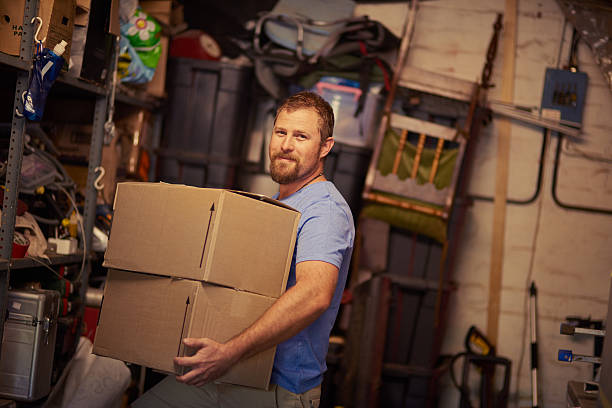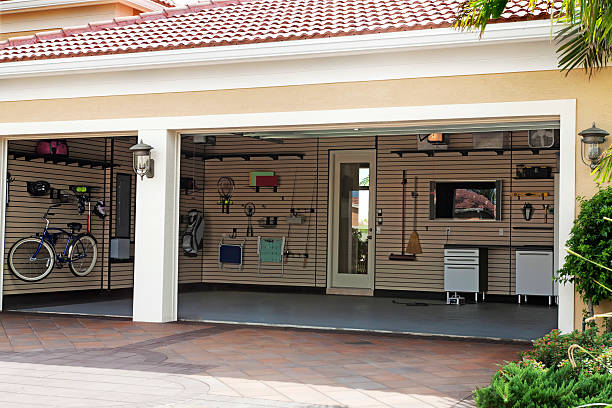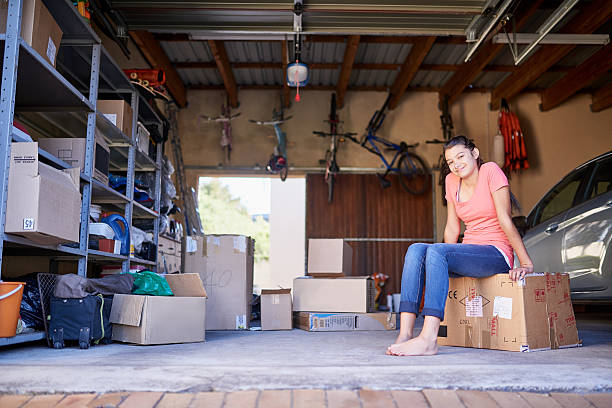The garage is often the home for various items, including tools, toys, and seasonal decorations. What begins as a space for parking cars quickly transforms into a storage haven — and not in a good way.
If you’ve ever tripped over garden tools or dug through boxes to find a flashlight, it’s time to change. This guide introduces a fresh, practical approach to garage organization, offering 1500+ words of actionable advice that will save you time, space, and frustration.
Whether your garage is large or small, these organizational strategies are designed to fit any layout. You can turn your garage from a chaotic catch-all into a functional, tidy space by categorizing your items, utilizing clever storage solutions, and committing to regular maintenance.

Step 1: Categorize Before You Organize
The first step to a well-organized garage is to categorize everything inside it. Sorting your items into categories makes it easier to figure out how much storage space you’ll need for each type of item and which organizational tools to invest in.
Here are six key categories to get you started:
- Toys and Sports Gear
- Seasonal and Holiday Decorations
- Camping and Outdoor Equipment
- Tools (Household and Automotive)
- Gardening Supplies
- Miscellaneous Items
Once everything is sorted into piles, you’ll have a clear view of most of the space and what can be hung, stacked, or boxed. This step also allows you to identify items you no longer need, opening up valuable space for the essentials.
Step 2: Storage Solutions for Every Category
With your items grouped, it’s time to explore storage solutions that maximize space while keeping everything accessible. Here’s how to approach each category:
1. Toys and Sports Gear
Children’s toys, balls, and outdoor play equipment are often scattered across the garage floor. If you’re tired of dodging soccer balls, it’s time to designate a proper storage space.
Storage Tips:
- Use Plastic Bins: Buy sturdy, transparent plastic bins with lids. Label each bin with its contents to make it easier for kids to find and return toys.
- Install Wall Racks: Mount wall racks for hanging scooters, bicycles, and skateboards. Keeping items off the floor instantly frees up space.
- Rolling Carts for Small Toys: For smaller toys like Frisbees or jump ropes, use a rolling cart with multiple storage trays. Kids can pull the cart out when needed and push it back when done.
2. Seasonal and Holiday Decorations
Holiday decorations, from Christmas lights to Halloween costumes, take up space all year but are only used briefly. This makes them prime candidates for vertical storage.
Storage Tips:
- Stackable Bins with Labels: Choose heavy-duty, stackable bins with clip-on lids to protect your items from dust, moisture, and pests. Label each bin according to the season or holiday it contains.
- Overhead Storage Racks: Install ceiling-mounted storage racks to place lightweight items like wreaths and garlands. This gets them out of the way while keeping them accessible.
- Vacuum-Sealed Bags: Vacuum-sealed bags save space and protect from moisture for costumes, fabric-based decorations, or spare linens.
3. Camping and Outdoor Equipment
Camping gear like sleeping bags, tents, and lanterns can be bulky and awkward to store. But with the right strategy, you can keep your outdoor adventure essentials neat and ready for your next trip.
Storage Tips:
- Use Large Totes: Group smaller items (like flashlights, insect repellent, and travel-sized cooking utensils) into large, lidded totes. This makes it easy to grab one box and hit the road.
- Hang Items Off the Floor: To free up floor space, fishing rods, hiking poles, and lawn chairs can be hung using hooks or wall racks.
- Protect Sleeping Bags and Tents: Store these items in breathable bags to prevent mildew. Avoid using airtight containers for storage to prevent moisture build-up.
4. Tools (Household and Automotive)
Tools are essential for home projects, but they can easily pile up if you don’t have a system. Organizing tools effectively means you’ll never have to search for a screwdriver or wrench again.
Storage Tips:
- Install a Pegboard: Mount a pegboard on the wall to easily access small tools like hammers, pliers, and screwdrivers. Pegboards offer flexibility because you can move hooks around as needed.
- Invest in a Tool Chest: A rolling tool chest with lockable drawers provides security and convenience for more extensive tool collections.
- Sort and Purge: Get rid of duplicate tools or those you never use. You don’t need five Phillips head screwdrivers! Donate or recycle what you don’t need.
5. Gardening Supplies
Gardening equipment, from soil to shears, needs its own space. Leaving it scattered can result in rusted tools or spilt fertilizer, creating an unnecessary mess.
Storage Tips:
- Use Metal Shelving Units: Metal shelves are strong enough to hold pots, bags of soil, and other heavy items. Look for wire mesh shelving to prevent dirt build-up.
- Hang Larger Tools: Mount hooks for rakes, shovels, and hoses. Hanging tools also keep the floor clear, making sweeping and cleaning easier.
- Store Small Items in Clear Containers: Store seeds, gloves, and gardening tools in small, clear containers so you can see what’s inside at a glance.
6. Miscellaneous Items
Not everything fits neatly into a category. For these odd items, create a “miscellaneous” zone. But don’t let this zone become a catch-all for clutter.
Storage Tips:
- Create a Catch-All Bin: Dedicate one large bin for items that don’t fit into other categories. Sort it every six months to avoid hoarding junk.
- Label and Rotate: If an item has not been used in a year, consider donating it. This helps prevent your garage from becoming a storage dump.
Step 3: Maximize Space with Smart Layouts
How you arrange your garage can make all the difference. Apply these layout tricks to increase your storage capacity and maintain order.
- Use Vertical Space: Install wall racks, hooks, and pegboards to store items off the floor. Overhead storage is also a game-changer for seasonal items.
- Create Zones: Assign a specific area for each category (toys, tools, garden supplies, etc.). This keeps similar items together, making them easy to find.
- Keep a Clear Pathway: Leave a walkway clear of clutter, especially near the garage entrance. This makes it easier to move in and out without obstacles.
Step 4: Regular Maintenance is Key
It’s one thing to organize your garage but another to keep it that way. Maintenance is crucial to ensure your hard work is well-spent.

Simple Maintenance Tips:
- Seasonal Purge: Review your garage Every spring and fall and remove unused items.
- Stick to the Zones: Ensure every item has a designated spot, and always return items to their “home” after use.
- Label and Adjust: Use clear, visible labels on bins and shelves. Update them as you add new items.
Benefits of a Well-Organized Garage
- More Space for Your Car: With better organization, you can park your car in the garage again!
- Time-Saving Convenience: No more searching for tools, holiday decorations, or camping gear. Everything is easy to find.
- Improved Safety: Fewer tripping hazards and sharper tools are stored securely.
- Increased Home Value: A clean, organized garage can add value if you ever decide to sell your home.

Final Thoughts
Organizing your garage doesn’t have to be a daunting task. By following this step-by-step approach, you can create a clean, functional, and stress-free space. Start by categorizing items, investing in quality storage solutions, and committing to regular maintenance. With just a little effort, you’ll transform your garage into a space that serves you, not the other way around.
Each item can have a designated home, whether you’re storing kids’ toys, tools, or holiday decorations. Once you reclaim the space, you might finally have room to park your car again. Take it one step at a time, and soon, you’ll wonder how you ever managed without an organized garage.

